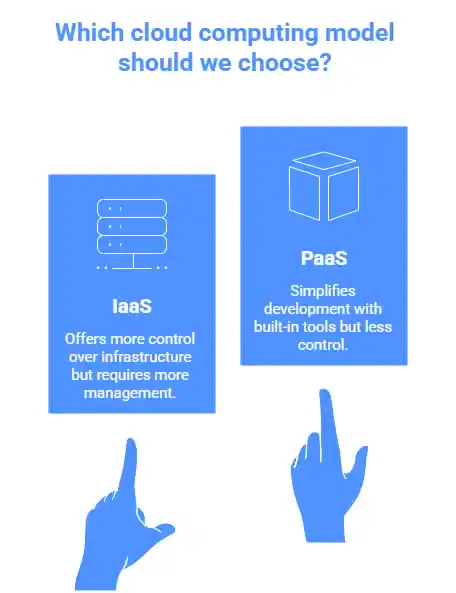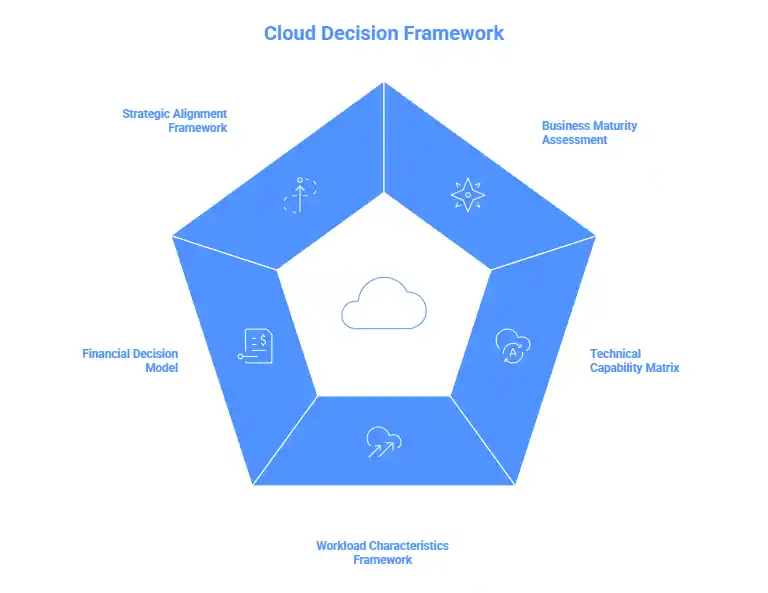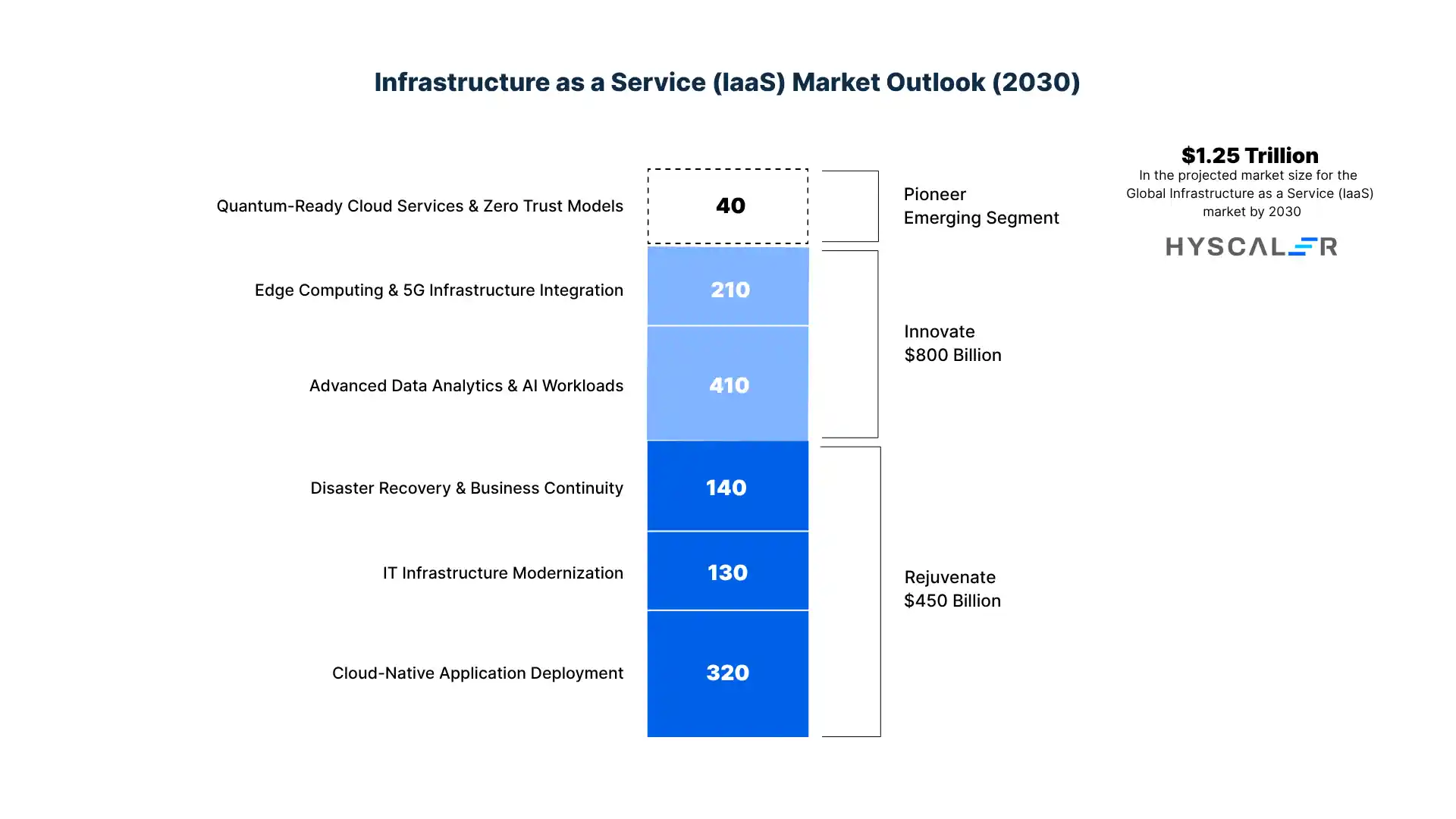Table of Contents
Understanding the differences between cloud service models is crucial for businesses looking to leverage cloud technology.
The debate of IaaS vs PaaS represents one of the most important decisions organizations face when adopting cloud solutions.
This comprehensive guide explores both Infrastructure as a Service (IaaS) and Platform as a Service (PaaS) to help you make informed decisions for your cloud strategy in 2025.

What is Infrastructure as a Service (IaaS)?
Infrastructure as a Service in cloud computing represents the most fundamental category of cloud computing services. IaaS in cloud computing provides virtualized computing resources over the internet, giving businesses access to essential infrastructure components without the need to invest in physical hardware.
The IaaS cloud model delivers computing infrastructure, including virtual machines, containers, storage, networks, and orchestration platforms on a pay-as-you-go basis. Organizations using IaaS services gain complete control over their infrastructure while eliminating the costs and complexity of buying and managing physical servers and datacenter infrastructure.
Modern Components of IaaS
Contemporary IaaS services include cutting-edge capabilities:
- GPU and AI-optimized compute instances: Specialized processing for machine learning workloads and generative AI applications
- Edge computing nodes: Distributed infrastructure for low-latency processing at network edges
- Kubernetes-managed clusters: Container orchestration platforms like AWS EKS, Azure AKS, and Google GKE
- Multi-cloud storage solutions: Object storage with intelligent tiering, file systems, and block storage with NVMe performance
- Software-defined networking: Advanced networking with service mesh, API gateways, and zero-trust architecture
Leading IaaS cloud providers include Amazon Web Services (AWS), Microsoft Azure, Google Cloud Platform (GCP), Oracle Cloud Infrastructure, and Alibaba Cloud.
These platforms now offer serverless computing options, spot instances for cost optimization, and carbon-neutral infrastructure options.
Benefits of IaaS in Cloud Computing
Organizations choosing IaaS benefit from:
- Dynamic cost optimization: Advanced pricing models including spot instances, reserved capacity, and savings plans
- Elastic scalability: Auto-scaling groups with predictive scaling based on AI/ML models
- Infrastructure as Code (IaC): Complete automation through Terraform, Pulumi, AWS CDK, and Azure Bicep
- Enhanced security: Built-in compliance frameworks, encryption at rest and in transit, and confidential computing
- Sustainability: Carbon-aware computing with renewable energy-powered data centers
What is Platform as a Service (PaaS)?
Platform as a Service in cloud computing sits one level above IaaS in the cloud service hierarchy. Modern PaaS provides a complete development, deployment, and management environment with integrated AI/ML capabilities, enabling developers to build cloud-native applications without managing the underlying infrastructure.
Contemporary PaaS Architecture
Today’s PaaS delivers comprehensive frameworks including serverless functions, managed Kubernetes, CI/CD pipelines, and AI-powered development tools. The platform encompasses infrastructure plus intelligent middleware, containerized microservices, managed databases with auto-scaling, and integrated observability platforms.
Leading PaaS examples include Google Cloud Run, AWS Elastic Beanstalk, Azure App Service, Heroku, Render, Vercel, Railway, and Salesforce Platform. Modern platforms support polyglot programming with Python, JavaScript/TypeScript, Go, Rust, Java, and .NET, while offering integrated DevOps workflows and GitOps deployment patterns.
Advantages of Platform as a Service
Contemporary PaaS offers compelling benefits:
- AI-accelerated development: Integrated Copilot assistants, code generation, and automated testing
- Serverless architecture: Event-driven computing with AWS Lambda, Azure Functions, and Google Cloud Functions
- Native observability: Built-in monitoring, distributed tracing, and AIOps capabilities
- Developer experience: Hot reloading, instant preview environments, and collaborative development
- Green computing: Automatic resource optimization, reducing carbon footprint
Difference between IaaS and PaaS
When evaluating IaaS vs PaaS, understanding the fundamental differences helps organizations choose the right service model.
The comparison of IaaS vs PaaS in 2025 reveals distinct characteristics that suit different use cases and organizational needs.
Control and Abstraction Levels
The primary distinction in the IaaS vs PaaS debate centers on abstraction. IaaS provides infrastructure control with Kubernetes clusters, virtual machines, and networking configuration. PaaS abstracts infrastructure completely, offering serverless deployment where developers push code and the platform handles everything from scaling to security patching.
Target Users and Use Cases
IaaS vs PaaS serve different audiences. IaaS in cloud computing targets platform engineers, DevOps teams, and organizations requiring custom infrastructure for complex distributed systems. Platform as a Service in cloud computing appeals to application developers, startups, and teams practicing continuous deployment who want to focus on business logic.
Modern Architecture Patterns
The IaaS vs PaaS tradeoff involves architectural decisions. IaaS services enable microservices with service mesh (Istio, Linkerd), event-driven architectures with Kafka, and custom ML pipelines with Kubeflow. PaaS provides managed microservices, built-in event streaming, and integrated AI/ML APIs.
Contemporary Use Cases
When comparing IaaS vs PaaS for 2025 scenarios:
IaaS excels for:
- Large language model (LLM) training and fine-tuning require GPU clusters
- Complex multi-tenant SaaS platforms with custom networking
- Real-time data streaming and processing with Apache Flink or Spark
- Hybrid cloud architectures with on-premises integration
- High-performance computing for scientific research and simulations
PaaS thrives in:
- Rapid MVP development and startup product launches
- Serverless APIs and event-driven microservices
- JAMstack applications with edge computing
- AI-powered applications using managed ML services
- Low-code/no-code business process automation
Strategic Decision Framework: Choosing Between IaaS vs PaaS
Business leaders need a structured approach when evaluating IaaS vs PaaS for their organizations in today’s rapidly evolving cloud landscape. The following framework provides a systematic methodology for making informed decisions.

The 5-Dimensional Cloud Decision Framework
When evaluating IaaS vs PaaS, assess your organization across five critical dimensions:
1. Business Maturity Assessment
Startup Phase (0-2 years)
- Recommendation: PaaS
- Rationale: Limited resources, need for rapid iteration, focus on product-market fit
- Platform as a Service enables faster time-to-market with minimal infrastructure overhead
Growth Phase (2-5 years)
- Recommendation: Hybrid (PaaS-first with selective IaaS)
- Rationale: Scaling demands, emerging technical complexity, and cost optimization needs
- IaaS vs PaaS decision varies by workload use PaaS for core applications, IaaS for data infrastructure
Enterprise Phase (5+ years)
- Recommendation: A Strategic mix of both
- Rationale: Complex requirements, regulatory compliance, legacy system integration
- Infrastructure as a Service for custom infrastructure, PaaS for innovation initiatives
2. Technical Capability Matrix
Evaluate your team’s expertise using this scoring system:
DevOps Maturity Score (1-10)
- Score 1-3: Choose PaaS → Limited infrastructure expertise requires managed services
- Score 4-6: Choose Hybrid → Some capabilities allow selective IaaS adoption
- Score 7-10: Choose IaaS → Strong platform engineering enables full infrastructure control
Development Team Size
- 1-10 developers: Platform as a Service in cloud computing reduces operational burden
- 11-50 developers: Hybrid approach with internal developer platform
- 50+ developers: IaaS cloud infrastructure with platform engineering team
Specialization Areas
- Strong in application development → PaaS advantage
- Strong in infrastructure/Kubernetes → IaaS advantage
- Strong in both → Optimal hybrid strategy
3. Workload Characteristics Framework
Use this decision tree for IaaS vs PaaS workload placement:
Application Pattern Analysis
| Characteristic | IaaS Indicator | PaaS Indicator |
| Traffic Pattern | Predictable, steady-state | Variable, bursty |
| State Management | Stateful, persistent | Stateless, ephemeral |
| Customization Need | High (custom networking, OS) | Low (standard patterns) |
| Compliance Requirements | Custom controls needed | Standard certifications sufficient |
| Performance Requirements | Specific hardware/GPU needs | General compute adequate |
| Data Processing | Complex ETL, real-time streaming | API-driven, event-based |
Choose IaaS services when:
- Running machine learning training requiring GPU clusters
- Implementing custom service mesh architectures
- Managing petabyte-scale data lakes with specific storage tiers
- Operating high-frequency trading systems with microsecond latency requirements
Choose PaaS when:
- Building customer-facing web/mobile applications
- Deploying serverless APIs and microservices
- Creating AI-powered applications using managed ML services
- Developing rapid prototypes and MVPs
4. Financial Decision Model
Apply this financial framework when comparing IaaS vs PaaS:
Total Cost of Ownership Calculator
IaaS Cost Components:
- Base infrastructure: Compute + Storage + Networking
- Personnel costs: DevOps engineers, SREs, security specialists
- Tool licensing: Monitoring, security, automation platforms
- Training and certifications: Kubernetes, cloud provider certifications
- Estimated overhead: 30-40% above raw infrastructure costs
PaaS Cost Components:
- Platform fees: Per-execution or per-hour pricing
- Add-on services: Databases, caching, messaging
- API call charges: Third-party integrations
- Support tier subscriptions
- Estimated overhead: 15-25% above base platform costs
Break-Even Analysis
- Small scale (<50 requests/second): PaaS is typically 40-60% cheaper
- Medium scale (50-500 requests/second): Costs comparable, choose based on other factors
- Large scale (>500 requests/second): IaaS in cloud computing can be 30-50% cheaper with optimization
FinOps Maturity Required
- PaaS: Basic cost monitoring is sufficient
- IaaS: Advanced FinOps practice essential for cost control
5. Strategic Alignment Framework
Align the IaaS vs PaaS decision with organizational strategy:
Digital Transformation Goals
Innovation-Focused Strategy
- Primary goal: Speed to market, experimentation
- Recommendation: Platform as a Service in cloud computing
- Rationale: Enables rapid prototyping, A/B testing, and quick pivots
Differentiation-Focused Strategy
- Primary goal: Unique technical capabilities, competitive moat
- Recommendation: Infrastructure as a Service in cloud computing
- Rationale: Custom infrastructure enables proprietary advantages
Efficiency-Focused Strategy
- Primary goal: Cost optimization, operational excellence
- Recommendation: Hybrid with FinOps governance
- Rationale: The Right tool for the right job maximizes efficiency
Sustainability and ESG Framework
Carbon Footprint Consideration
- PaaS advantage: Automatic resource optimization, shared infrastructure efficiency
- IaaS consideration: Requires carbon-aware scheduling and rightsizing discipline
- Both IaaS services and PaaS solutions now offer carbon metrics and renewable energy matching
ESG Reporting Requirements
- High ESG scrutiny → Choose providers with comprehensive sustainability reporting
- Evaluate both IaaS vs PaaS options for carbon neutrality commitments
This structured framework ensures your IaaS vs PaaS decisions are data-driven, aligned with business objectives, and adaptable as your organization evolves.
Future Trends: The Evolution of IaaS vs PaaS
Technology evolution continues reshaping the IaaS vs PaaS landscape, introducing capabilities that blur traditional boundaries.
Generative AI and Large Language Models
Modern IaaS in cloud computing increasingly incorporates GPU clusters optimized for LLM training, vector databases for retrieval-augmented generation (RAG), and inference acceleration. Platform as a Service in cloud computing evolves toward AI-native platforms with managed fine-tuning, prompt engineering tools, and integrated vector search.
WebAssembly and Edge Computing
Forward-thinking organizations move beyond the simple IaaS vs PaaS question toward edge-first strategies. Businesses deploy WebAssembly workloads on edge networks using platforms like Cloudflare Workers, reducing latency and bandwidth costs while maintaining PaaS simplicity.
Sustainable Computing and Green Cloud
The IaaS vs PaaS dynamic increasingly considers environmental impact. Organizations demand carbon-aware workload scheduling, renewable energy matching, and efficiency reporting. Modern IaaS services expose carbon metrics APIs, while PaaS platforms automatically optimize for energy efficiency.
Making the Right Choice: IaaS vs PaaS Decision Matrix
Selecting between IaaS vs PaaS depends on your organization’s specific requirements, technical maturity, and strategic goals in 2025. Most enterprises adopt a platform engineering approach, using both IaaS and PaaS services orchestrated through internal developer platforms.
The global Infrastructure as a Service market is set to reach $1.25 trillion by 2030, with AI workloads, edge computing, and cloud-native applications driving 64% of this growth.

Consider IaaS in cloud computing when you need custom infrastructure, are building complex distributed systems, require specific compliance controls, or have strong platform engineering teams. Choose Platform as a Service in cloud computing when prioritizing developer velocity, building customer-facing applications, adopting serverless patterns, or minimizing operational overhead.
Understanding IaaS vs PaaS empowers organizations to leverage modern cloud computing effectively. Both Infrastructure as a Service and Platform as a Service offer unique advantages, and the optimal choice aligns with your business objectives, technical requirements, and innovation velocity.
Key Takeaways for Business Leaders
The IaaS vs PaaS decision represents more than a technical choice. It’s a strategic business decision affecting agility, innovation capacity, and competitive positioning. Successful organizations in 2025:
- Evaluate IaaS vs PaaS options based on workload characteristics rather than organizational preferences
- Embrace platform engineering to create unified developer experiences across IaaS services and PaaS platforms
- Implement FinOps practices to optimize cloud spending regardless of the chosen model
- Prioritize IaaS vs PaaS solutions supporting AI/ML innovation and generative AI adoption
- Adopt sustainability metrics when selecting between IaaS cloud and PaaS offerings
- Continuously reassess their IaaS vs PaaS strategy as cloud capabilities and business needs evolve
As cloud technology advances with AI integration, edge computing, and sustainability focus, staying informed about IaaS vs PaaS developments ensures your organization maintains competitive advantage.
Ready to make the right cloud decision for your business?
Our cloud experts help you navigate the IaaS vs PaaS landscape with tailored assessments, FinOps optimization, and platform engineering solutions designed for your specific needs.
Contact us today to build a cloud strategy that drives measurable ROI and positions your organization for long-term innovation leadership.
FAQ
What is the main difference between IaaS and PaaS?
IaaS provides virtualized infrastructure (servers, storage, networking) that you manage and configure yourself, while PaaS offers a complete development platform where you only focus on your application code and the provider manages all infrastructure.
Can I use both IaaS and PaaS together in my organization?
Yes, most enterprises use a hybrid approach leveraging PaaS for rapid application development and customer-facing apps, while using IaaS for custom infrastructure needs, data processing, and workloads requiring specific configurations.
Which is more expensive: IaaS or PaaS?
PaaS is 40-60% cheaper for small-scale operations (under 100K users) when including personnel costs, but IaaS becomes 30-50% more cost-effective at large scale (over 1M users) with proper optimization and dedicated engineering teams.
Who manages security in IaaS vs PaaS, and which is more secure?
With IaaS you manage security from the OS upward (applications, data, access controls), while with PaaS the provider handles infrastructure and OS security and you only manage application-level security. Neither is inherently more secure, it depends on your team’s expertise and compliance requirements.
When should I choose IaaS over PaaS?
Choose IaaS when you need custom infrastructure, specific hardware (GPUs), complex compliance controls, or have strong engineering teams; choose PaaS when you prioritize speed to market, have small ops teams, or want to focus developers on features rather than infrastructure management.
What are some examples of IaaS, PaaS, and SaaS cloud services?
IaaS examples include AWS EC2, Azure VMs, and Google Compute Engine; PaaS examples include Heroku, Google App Engine, and Azure App Service; SaaS examples include Gmail, Salesforce, and Microsoft 365.
How do I choose the right PaaS provider for my needs?
Evaluate based on supported programming languages, scalability options, pricing structure, integration capabilities, vendor lock-in risks, and alignment with your application requirements.
How do I decide between SaaS, PaaS, and IaaS for my project?
Choose IaaS for maximum control and customization, PaaS for faster application development without infrastructure management, and SaaS for ready-to-use applications with minimal configuration.
What are the types of cloud computing?
The main types are Public Cloud (shared infrastructure), Private Cloud (dedicated infrastructure), Hybrid Cloud (combination of public and private), and Multi-Cloud (multiple cloud providers).
What are the types of cloud computing?
The main types are Public Cloud (shared infrastructure), Private Cloud (dedicated infrastructure), Hybrid Cloud (combination of public and private), and Multi-Cloud (multiple cloud providers).
What does ‘as a service’ mean?
It means the provider manages the underlying infrastructure and delivers computing resources, platforms, or software over the internet on a subscription or pay-per-use basis.